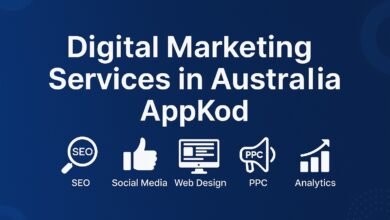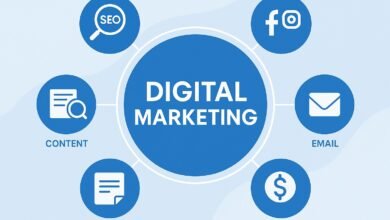Understanding the Role of a Digital Creator

Introduction to Digital Creators
The term “digital creator” refers to individuals who produce and share content primarily in digital formats across various online platforms. This modern role has gained significant prominence due to the evolution of the internet and the increasing reliance on digital media for communication, entertainment, and information consumption. As technology has advanced, so too has the way in which we create and disseminate content. Digital creators can range from social media influencers and bloggers to video producers and podcasters, each contributing to a rich tapestry of online expression.
The emergence of digital creators can be closely linked to the rise of platforms such as YouTube, Instagram, TikTok, and others, which have democratized content sharing. These platforms offer individuals the ability to reach vast audiences without the need for traditional gatekeeping associated with publishing or broadcasting. Consequently, this has led to a surge in the number of people identifying themselves as creators, leveraging their skills and passions to engage with followers and cultivate communities around shared interests.
The importance of digital content creation in today’s economy and culture cannot be overstated. Companies increasingly turn to these creators for brand promotion and advertising, recognizing the trust and authenticity they can bring to a marketing campaign. Furthermore, social media has transformed how content is consumed, making it more immediate and personal. From lifestyle blogs to educational videos, the diversity of content types is reflective of the varied interests of audiences in the digital landscape.
In summary, understanding what is a digital creator is essential for recognizing the evolving digital economy and the myriad opportunities it presents for individuals. As this role continues to adapt to technological advancements and changing viewer preferences, the landscape of digital content creation will undoubtedly continue to flourish.
Types of Digital Creators
The realm of digital creation encompasses a broad spectrum of individuals who harness technology to produce content across various platforms. Understanding the different types of digital creators helps in appreciating the diverse methodologies and strategies employed in the digital landscape.
One of the foremost categories is the **blogger**. Bloggers typically create written content for websites and blogs, sharing insights, information, or personal experiences on topics ranging from travel to technology. Platforms such as WordPress and Medium are popular among bloggers for their user-friendly interfaces and extensive reach. For instance, a food blogger may share recipes, cooking tips, and restaurant reviews on their site.
Another prominent type is the **YouTuber**, who produces videos for the YouTube platform. This and similar platforms enable creators to engage audiences visually. Content can vary widely, from vlogs and tutorials to reviews and entertainment skits. For example, a YouTuber specializing in technology might post product reviews or comparative analyses, demonstrating gadgets and software for their viewers.
**Podcasters** represent another dynamic segment of digital creators, focusing on audio content. They create episodic programs that can cover virtually any subject matter imaginable, from personal stories to current affairs discussions. Platforms like Spotify and Apple Podcasts facilitate their distribution, making podcasts an accessible medium for listeners on the go.
The rise of social media gives way to **social media influencers**, who leverage platforms like Instagram, TikTok, and Twitter to connect with audiences. These creators often share lifestyle content, promotional partnerships, and personal anecdotes, shaping public perception in various niches. For example, a fitness influencer might post workout routines and nutrition advice while collaborating with health brands.
Finally, **graphic designers** utilize visualization tools and software to create graphics, logos, and branding content. They cater to businesses and individual clients, making digital designs that resonate visually. Tools such as Adobe Creative Cloud are integral to their work, enabling them to realize creative concepts effectively.
Each type of digital creator contributes uniquely to the digital ecosystem, enriching the online experience and showcasing their artistry through diverse content formats. The versatility among bloggers, YouTubers, podcasters, social media influencers, and graphic designers illustrates the broad scope of what it means to be a digital creator today.
Skills Required to Be a Digital Creator
In the fast-evolving landscape of the digital realm, understanding what is a digital creator is fundamental. These individuals are not just content producers; they are versatile professionals who merge creativity with technology. To thrive in this competitive environment, aspiring digital creators must develop a diverse skill set that includes creativity, technical skills, adaptability, and marketing knowledge.
Creativity is at the heart of a digital creator’s work. This innate ability allows creators to produce unique and engaging content, whether it be in the form of videos, blogs, graphics, or photography. Originality attracts audiences and keeps them engaged, which is crucial for building a loyal following. A digital creator must consistently generate fresh ideas that resonate with their target demographic, facilitating a connection that transcends mere consumption.
Alongside creativity, technical skills are equally essential. Proficiency in various software programs, such as graphic design tools or video editing software, enables digital creators to bring their ideas to life. Additionally, a solid understanding of web development, coding basics, and platform-specific guidelines is beneficial in curating content that meets quality standards. As technology advances, ongoing education in these areas is necessary for remaining relevant in the industry.
Adaptability is another critical skill for digital creators. The digital landscape is continually shifting, with new platforms and trends emerging regularly. Successful creators are those who stay informed about changes in algorithms, user preferences, and platform functionalities. This flexibility allows them to pivot their strategies, explore new opportunities, and engage audiences effectively.
Finally, knowledge of marketing principles is vital for a digital creator. Understanding how to promote content, engage in social media marketing, and analyze audience analytics empowers creators to reach wider audiences and maximize their impact. By blending creativity with marketing savvy, digital creators can sustain and grow their personal brands in a competitive market.
The Tools of a Digital Creator
The tools utilized by digital creators play a crucial role in their ability to produce high-quality content efficiently. These tools range from video editing software to graphic design utilities, each serving a unique purpose in the content creation process. For instance, video editing software such as Adobe Premiere Pro and Final Cut Pro enables creators to edit footage seamlessly, add effects, and work with different formats. Such programs are pivotal for those who want to produce videos, as they provide comprehensive features that enhance the visual appeal and narrative flow of the content.
Graphic design is another essential facet of digital creation, requiring sophisticated tools to transform ideas into visual representations. Software like Adobe Photoshop and Canva allows digital creators to design engaging graphics, logos, and other visual elements that resonate with their audience. These design tools are invaluable for enhancing branding and making content more visually appealing, thereby increasing engagement across various platforms.
In addition to video editing and graphic design, social media management platforms also play a significant role in the ecosystem of a digital creator. Tools such as Hootsuite and Buffer facilitate scheduling posts, analyzing engagement, and collaborating with team members. These platforms streamline the workflow, allowing creators to focus more on the craft of content generation rather than the logistical side of managing social media accounts.
Ultimately, the effectiveness of a digital creator often hinges on their choice of tools and software. The right equipment not only leads to higher-quality content but also enhances productivity, allowing creators to bring their visions to life more effectively. By leveraging these various tools, digital creators can carve out their niche and engage audiences in meaningful ways.
Monetizing Digital Creation
Monetization for digital creators encompasses various avenues that allow individuals to convert their online presence and content into financial gain. With the rise of social media and content creation platforms, many creators are finding innovative ways to generate revenue. One of the primary methods is through advertising. Digital creators can partner with brands to display advertisements on their content, whether through videos, blogs, or social media posts. This method can be lucrative, particularly for those with a significant following, enabling creators to earn substantial income based on both impressions and engagement rates.
Sponsorships represent another viable income stream for these content creators. Established brands often seek to collaborate with creators whose audience aligns with their target demographic. By collaborating on sponsored content, creators can leverage their influence to promote products or services for financial compensation. These partnerships not only provide creators with income but also enhance the brand’s reach and authenticity among consumers.
Additionally, merchandise sales present a unique opportunity for many creators. By developing and selling branded products, such as apparel, accessories, or digital goods, creators can cultivate a deeper connection with their audience while tapping into their brand identity. Crowdfunding platforms, such as Patreon or Ko-fi, also empower digital creators to earn income directly from their fans. Through monthly subscriptions or one-time donations, supporters can help fund the creator’s projects and artistic endeavors.
Despite these opportunities, digital creators face significant challenges in establishing a sustainable income. The competitive landscape requires constant innovation and adaptability. Creators must continually engage their audience to maintain relevance and visibility. Moreover, platforms constantly evolve, which may impact monetization strategies. Therefore, it is essential for digital creators to explore multiple revenue streams while staying attuned to their audience’s preferences to thrive in the dynamic digital economy.
Building an Engaged Audience
Establishing an engaged audience is a fundamental aspect of what it means to be a digital creator. It involves more than just attracting followers; it requires understanding the demographics and preferences of your audience to foster a meaningful connection. Identifying the specific characteristics of your target audience, such as age, interests, and geographical location, allows you to tailor your content to meet their needs and expectations. By leveraging social media platforms and analytics tools, digital creators can gain insights into who their audience is and how they interact with various types of content.
Creating meaningful interactions is crucial for engagement. Digital creators should actively engage with their audience by responding to comments, initiating conversations, and asking for feedback. This two-way communication fosters a sense of community, making followers feel valued and heard. Hosting live Q&A sessions, webinars, or interactive polls can effectively enhance engagement levels. Additionally, personalizing content by addressing specific audience interests or concerns can further strengthen this bond, ensuring that followers remain invested in the digital creator’s journey.
Moreover, utilizing analytics to inform content strategies is essential in this digital age. Platforms like Google Analytics, Instagram Insights, and YouTube Analytics provide valuable data on user behavior and engagement metrics. By analyzing these insights, creators can determine which types of content resonate most with their audience and refine their strategies accordingly. This continuous loop of understanding audience feedback and adjusting content ensures sustained growth of an engaged audience. Implementing these strategies not only helps in retaining existing followers but also aids in attracting new ones, ultimately solidifying the digital creator’s presence in the expansive online landscape.
The Impact of Social Media
In the contemporary digital landscape, social media serves as an essential platform for digital creators to showcase their work and engage with audiences. For those asking what is a digital creator, the answer encompasses a range of individuals producing content across various forms, including videos, photographs, text, and more. Social media platforms like Instagram, TikTok, and Twitter have revolutionized how these creators share their insights, talents, and narratives with the world.
One of the primary advantages of leveraging social media is the immense reach it provides. Digital creators can easily disseminate their work to millions of users globally, fostering a sense of community among like-minded individuals. For example, TikTok’s algorithm allows creators to go viral rapidly, enabling their content to be viewed by a broader audience without requiring conventional marketing strategies. Likewise, Instagram allows creators to use visual elements to captivate their audience, while Twitter serves as a means for real-time engagement and feedback. This interconnectedness can lead to increased opportunities such as sponsorships, collaborations, and brand partnerships, which are integral to a digital creator’s success.
However, the reliance on social media also presents some challenges. The pressure to maintain a constant online presence can be overwhelming, often leading to burnout among creators. The fast-paced nature of social media trends may compel creators to produce content that aligns with fleeting interests rather than focusing on their unique styles. Furthermore, being subject to public scrutiny can impact mental health, as creators frequently navigate feedback ranging from constructive criticism to negative comments. As a result, while social media is an invaluable tool for digital creators to expand their reach, it is critical for them to find a balance that preserves their creative authenticity and emotional wellbeing.
Challenges Faced by Digital Creators
The landscape of digital creation is undeniably exciting, yet it is not without its challenges. Digital creators—individuals who produce content across various online platforms—frequently encounter several significant hurdles that can impact their work and well-being. One of the most prevalent issues is burnout. The demand for consistent, high-quality content can lead to a feeling of exhaustion, stifling creativity and motivation. To combat this, creators must prioritize self-care and establish a sustainable work-life balance that allows for breaks and downtime.
Another considerable challenge is content saturation. As the digital world becomes increasingly crowded with creators from various niches, standing out becomes a formidable task. This saturation can make it difficult for an individual creator’s work to be noticed amidst the myriad of content available. To overcome this, digital creators need to focus on developing a unique voice or perspective that differentiates their content from others. Additionally, tailoring content for specific audiences can enhance engagement and visibility.
Algorithm changes across platforms represent yet another challenge for digital creators. These ever-evolving criteria can significantly affect how content is distributed and seen, often causing fluctuations in audience engagement. Creators must remain adaptable and stay informed about these changes, refining their strategies in response to new algorithm updates. Furthermore, understanding data analytics can provide insights into audience preferences, enabling creators to pivot their approach effectively.
Copyright issues also emerge as a critical concern for those engaged in digital creation. The complexity of intellectual property laws can create obstacles when using existing materials or collaborating with other creators. To navigate these issues, it is essential for digital creators to familiarize themselves with copyright regulations and seek legal advice when uncertain. By addressing these challenges proactively, digital creators can continue to thrive in an ever-evolving digital landscape.
The Future of Digital Creation
The landscape of digital creation is continuously evolving, driven by advancements in technology and the burgeoning demands of audiences. As we look to the future, several trends are emerging that will significantly influence what it means to be a digital creator. Among these trends, virtual reality (VR) and augmented reality (AR) are at the forefront, transforming traditional content creation modalities and allowing creators to immerse their audiences in richer, more interactive experiences.
Virtual reality enables creators to build fully immersive environments where users can engage actively rather than passively consuming content. This shift encourages digital creators to harness VR in innovative ways, whether for storytelling, educational purposes, or virtually guided experiences. Simultaneously, augmented reality adds a layer of digital interaction to the physical world, opening new avenues for creators to interact with their audiences through applications that blend reality with artistry.
Artificial intelligence (AI) is another powerful force redefining the role of digital creators. AI technologies are streamlining the creative process by providing tools that assist in generating content, analyzing audience preferences, and personalizing user experiences. For example, AI-driven algorithms can help creators near-instantaneously assess which types of content resonate most strongly with their audiences, thus optimizing their strategies and improving engagement metrics. This capability not only saves time but also enables a more focused and effective creative process.
Ultimately, the future of digital creation seems poised for remarkable growth and transformation. As technologies like VR, AR, and AI continue to advance, they present new opportunities and challenges for digital creators. These emerging tools will likely reshape the creative landscape, allowing content creators to experiment more profoundly and engage their audiences in ways previously thought unimaginable. With the right skills and adaptability, those in the realm of digital creation can look forward to a future rich with potential.



